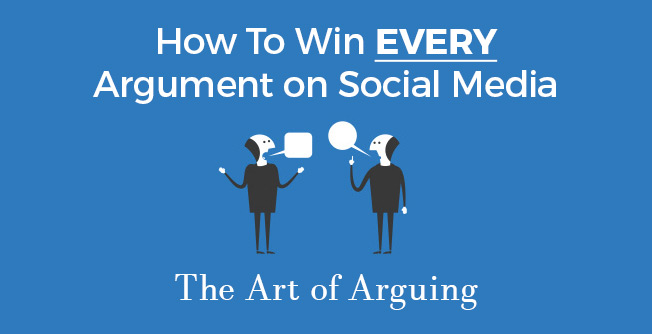1
Steph W. from SEOPressor


👋 Hey there! Would you like to try out this New AI-Powered App that'll...
...help you check your website and tell you exactly how to rank higher?




...help you check your website and tell you exactly how to rank higher?



SUBSCRIBE TO SEOPressor BLOG
Join 50,000+ fellow SEO marketers!
Get SEOPressor latest insights straight to your inbox.
Enter your email address below:
74
score %
SEO Score

Found us from search engine?
We rank high, you can too.
SEOPressor helps you to optimize your on-page SEO for higher & improved search ranking.
By vivian on September 28, 2015

Engaging with consumers is an important part of inbound marketing. It’s one of the reasons why social media has become such an effective tool – it lets you engage directly with your consumers in two-way conversations. This kind of engagement makes your brand appear more personal as it shows consumers that you actually care about what they think.
However, not all engagements are positive. There will be consumers who have something negative to say. How you handle yourself in moments such as these can have a huge impact on your reputation – everything you say on social media is on record and on public display, after all.
That doesn’t mean that you shouldn’t engage in any argument. You don’t want to concede to someone that has made a comment that is untrue. Nor do you simply want to ignore critical comments – ignoring a consumer’s attempt to engage with you can be just as bad as insulting them.
Obviously, you have to control your temper and practice patience when arguing with someone online. It’s a good idea to think of it less as an argument and more as a debate or discussion.
The following are a number of tips that should help you to argue effectively in a way that can enhance your reputation and not damage it:
First and foremost, you’ll need to pick your fights carefully. Never argue with someone just for the sake of arguing. A negative feedback on your brand, product or service shouldn’t automatically turn into an argument.
Everyone is entitled to their own opinion and just because they don’t like something about your brand doesn’t mean they are wrong.
If there are any complaints on your brand, investigate whether their complaints are valid or invalid, if valid, apologize and offer some ways you can do to make it up to your customer and move on.
If the complaint is untrue, try to understand why they make such statements and clear the air if there are any misunderstandings. If problem persist, offer to solve the problem through a face-to-face meeting or over the phone. The idea here is to bring the argument into somewhere private so that two sides can talk things out without getting any premature judgment from the public.

Don’t lose an arm fighting an unnecessary fight
The last thing you want to do is respond emotionally. This usually means that you’re responding negatively. Your brand is bigger than your particular personality. The last thing you want is for your brand to develop a reputation as being touchy.

Be like Kristen Stewart, be emotionless when arguing.
If you get emotional, wait ten minutes so that you can cool off before responding. And remember, there are people out there that will post inflammatory comments on purpose just to get a reaction. They are known as “trolls,” and they are just trying to bait an inflammatory response for their own entertainment.

There’s a popular advice on the internet that says “don’t feed the trolls,” which means don’t satisfy the trolls by responding to them emotionally. Just engage with them in a civil manner without any hint of emotion – the public will see that you are handling the situation with professionalism.
![]()
However, they may go off on a tangent – following their claims that your product isn’t safe with a comment about how the aesthetic design is poor as well. Don’t get caught up debating the visual style of your product when you were responding over questions of safety – you’ve already achieved your objective here.

If you are going to argue with someone, make sure that you can back up your statements. Have facts and evidence available from credible sources that you can use in order to prove your side of the argument.
If you don’t, it’s going to look like you’re wrong, since why else wouldn’t you be backing up what you’re saying? If you do use facts and evidence, it will help prove your case, thereby increasing trust and loyalty among the public witnessing the argument.

Don’t just jump into the fray by arguing a point someone has brought up immediately. If someone is making a false statement about your brand, be sure to ask them questions first. It’s often more effective when a commenter can’t prove that their statement is true than to prove that their statement is false.
Ask them to justify what they are saying by either providing facts that prove the statement or explaining their feelings behind an opinion. By making them think more about it, they’ll often see that they are wrong without you needing to proved that they were wrong. This allows them to save some face, which is important since you do still want them as a customer.
On the other hand, they may be able to justify their comment with facts or they may have good reasoning behind their opinion. In this case, you just avoided making yourself look foolish and avoid any embarrassment by agreeing with them and backing out of the argument peacefully.
If you’re going to engage in an argument, then be confident and assertive about your stance.
For example, say you run a wedding photography business. If someone posts something inflammatory about gay marriage (a topic that has had plenty of press over the past year), then don’t try to skirt the line by using words like “maybe” or “could.” If you have a view on the matter (and it’s a view shared by your brand over all), then make a stand.

“If you don’t stand for something, you’ll fall for anything.” – Peter Marshall
Yes, some of your customers may not agree with you – but those that do will develop more loyalty for your brand. Whereas if you didn’t show confidence with your reply, you may end up alienating both sides.
Of course, you don’t always want to get into debates such as these since you don’t want to risk alienating part of your customer base – but you shouldn’t be afraid to take a stand in order to back up your brand’s beliefs.
A person that finds themselves in the middle of an argument in which they realize they are wrong will often keep arguing just for the sake of protecting their ego. If you engage in an argument with someone, be civil and don’t get personal.

Make it easy for them to back down from the argument once you’ve proven them wrong. You don’t want to make them feel like they have lost something by losing the argument.

This doesn’t mean don’t pick a side. It means don’t go on the offensive or don’t get defensive. Ask them to present their reasoning behind their comments instead of attacking them immediately or by getting defensive about the comments they have made.
Then simply provide a counterpoint using facts and evidence. This is much more constructive, whereas replying in an attacking or defensive manner can easily make the argument become personal and ugly.
To win an argument, you need logic, facts, and sense. And many times, these are unavailable or harder to attain, so people resort to using flawed arguments which are logical fallacies. Using logical fallacies will not only lose you the argument, but make you look dumb and childish.

So make sure you are aware of the various logical fallacies that could incriminate you. The following are a few common strategies that are used when arguing in a defensive or offensive way, strategies that you’ll want to avoid when engaging with your consumer base:
A straw man strategy is all about creating an argument that barely has anything to do with your point – it’s used in order to make the opposing view look bad. Basically, it’s creating an assumption that because they believe in one thing – they must believe in another thing as well.
For example, if a person likes orange juice better than apple juice, then they must hate apples. Having a preference between two things doesn’t mean that you dislike one of them – this is a straw man argument.
An ad hominem strategy is one used to attack the opponent in order to bring doubt to their argument. It’s an incredibly underhanded tactic that you should never use – if you use this tactic, you’re a horrible horrible person.
For example, pointing out that the person who criticized the quality of one of your products has a criminal record and therefore shouldn’t be trusted.
A slippery slope strategy is a strategy in which you take two correlating facts and declare that one caused the other in order to back your point.
For example, the number of crimes perpetrated in a particular area of the city may correlate to the number of homeless people living in that area.
However, you’re using a slippery slope strategy if you’re saying one is the result of the other. Just because they correlate does not mean that homelessness causes crime or vice versa. These kind of arguments are dangerous because you’re using facts as the basis for your argument, but you’re then making an unsubstantiated leap to connect those facts for the sake of your argument.
While you may trick some of the public into thinking that you’re making a factual argument, those who see through it will believe that you were deliberately trying to mislead them in order to win your argument.
An anecdotal fallacy is a strategy based on a personal experience you had. A personal experience can be easily made up – and even if it wasn’t, it could easily be a rare exception.
For example, if someone comments that a product by one of your competitors is superior than that of your brand, then an anecdotal fallacy would be stating that the competitor’s product that the commenter mentioned is of bad quality because you tried it once and it didn’t work.
This is one of the worst kind of arguments to use because it’s so easy to see through – and the public is going to assume that you are just grasping at straws in an effort to not lose the argument.
Confirmation bias is all about cherry picking facts that help to support your argument while ignoring facts that actually disprove your argument.
For example, say you sell some kind of a dietary supplement. Someone comments that your supplement doesn’t work. You then back your case by pointing out a scientific study in which 95 percent of the subjects experienced weight loss within a week of taking the supplement, but you ignore the fact that those subjects were all rabbits.
Anyone that does a little research is going to figure something like this out. Confirmation bias is something you’ll want to avoid as it paints a dishonest portrait of your brand.
There are many other logical fallacies but the few above are more common and you can see them everyday on the social media. Here’s a compilation of all the logical fallacies in one awesome infographic:
If you’re wrong, you’re wrong. Although this shouldn’t happen too often if you picked your arguments wisely, but well, shit happens.
Maybe the person you were arguing with presented you with facts and points that you didn’t thought of initially. The last thing you should do is continue to defend yourself – because at this point it’s obvious you’re wrong, which means that the argument has become personal to you.

Don’t be a sore loser and concede gracefully.
There’s nothing wrong with doing this, in fact, it is highly commended as people appreciate companies that are willing to admit when they are wrong since this means that they are probably more willing to do something about what it is they are wrong about. This also helps to build trust among your customer base.
If you win the argument, do so in a humble manner. Don’t rub it in the face of the person who lost the argument. This will make you look like a jerk, which means that even though you won the argument, you basically lost since your reputation will still take a hit.
Be polite and even thankful for the person that you argued with for sharing their thoughts or beliefs and encourage others to do so as well – the more consumers engage with you, the better.
At the end, it’s just another day and another argument online, why do you want to win so bad? Is it because you want everyone online to read what you’ve written? Is it for attention?
A better way to do that is by talking about what people are actually interested in. How can you know that?
A handy tool like BiQ can tell you exactly that.

Just choose a topic – a keyword that you want to focus on and plug it into BiQ.
You’ll then be presented with lists after lists of other related topics that people are also interested in, and also popular questions people are asking about it, not forgeting the trending searches that is related to your topic that is being searched by thousands around the world.
So give it a try, and bulk yourself up with such data and stats so you can win even more arguments and get the attention you deserves.
As much as you want to avoid arguments, you should also remember that there is nothing to fear should you take a stand and start an argument on social media. Arguments can benefit your brand – just be sure to use these tips for winning your argument and doing so in a humble and respectful manner.
Other articles you might like:
Updated: 19 April 2024

Vivian is an anthropologist lost in the world of digital marketing. She has an interest in learning about the science of marketing and the creativity that businesses use to transform themselves into purple cows.
Do you want to
Grow Your Traffic FAST?

Generates 5,000 words in minutes

Publish 60+ content in a month

Rank in the SERP’s Top 10

Gotcha.

Generate 5,000 words in under 5 minutes

Publish 100+ blog posts monthly

Rank in the Top 10 with SEO-optimized content

Drive 500K organic traffic
Rank in the Top 10 now with Longform AI
Save 67% today (As low as $14.69/mo)


Subscribe and receive exclusive insider tips and tricks on SEO.
Delivered to you right from the industry’s best SEO team.
Copyright © 2024 SEOPressor. All Rights Reserved.
Powered by Semantics BigData Analytics (SBDA).

